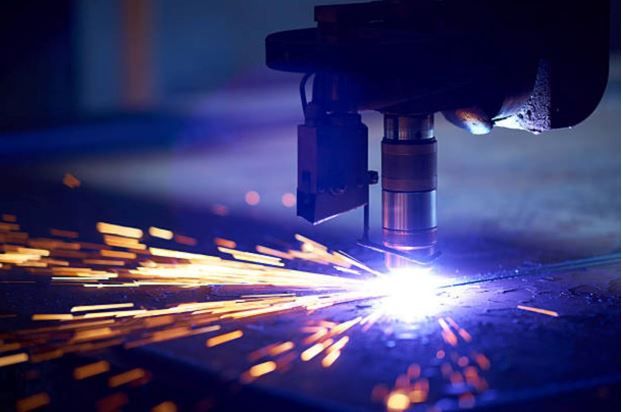Maximizing Efficiency in the Design and Production Process
The journey from initial design to the final installation of a product involves numerous stages, each requiring careful coordination and attention to detail. In today’s fast-paced world, efficiency is essential for managing timelines, budgets, and resources in any design and production process. By focusing on streamlined workflows, proactive planning, and smart resource management, teams can maximize efficiency without sacrificing quality.
For companies looking to improve their design-to-installation workflow, working with experienced partners like DesignElement Raleigh can offer insights into strategies that enhance productivity. Here’s a guide to key practices that maximize efficiency in the design and production process, ensuring smooth progression from concept to completion.
1. Start with Clear Project Goals
A clear understanding of the project’s goals provides a solid foundation for efficient progress. Defining what the project aims to achieve, the client’s expectations, and the desired timeline sets the tone for every subsequent phase, preventing misunderstandings and delays.
Components of Goal Setting
- Identify Key Objectives: Determine the primary goals, whether it’s creating a functional design, meeting a specific aesthetic, or achieving a certain level of durability.
- Set Realistic Timelines: Understanding the project’s timeline helps prioritize tasks and keep the project moving at a consistent pace.
- Clarify Budget Constraints: Recognize financial boundaries to guide material selection, resource allocation, and design options.
Having clear goals allows the team to work efficiently, making decisions aligned with the project’s overall direction.
2. Embrace Collaborative Design Software
Using collaborative design software enhances communication and enables team members to work together in real time. This digital approach to design allows designers, clients, and project managers to view changes, provide input, and approve elements quickly.
Benefits of Collaborative Design Tools
- Real-Time Edits: Changes can be made and viewed immediately, minimizing delays and improving workflow.
- Version Control: Teams can keep track of design changes, reducing confusion and ensuring everyone works with the latest version.
- Enhanced Communication: Design notes, comments, and feedback can be easily shared within the platform, fostering collaboration.
By leveraging technology to improve collaboration, the design phase becomes more streamlined and interactive, allowing for quick adjustments that keep the project moving.
3. Streamline Material Selection
Selecting materials is a critical part of the design and production process. However, extensive time spent on this task can slow down the project. Creating a streamlined material selection process with pre-approved options and clear specifications helps reduce decision-making time while ensuring quality.
Steps to Streamline Material Selection
- Develop a Material Library: Having a library of pre-selected, high-quality materials enables quicker decision-making.
- Align Material Choices with Goals: Choose materials based on the project’s durability, budget, and aesthetic goals to avoid reconsiderations.
- Standardize Selections: By establishing a list of preferred materials, teams can reduce delays from re-evaluating options.
Streamlined material selection minimizes time spent on back-and-forth decisions, ensuring the project moves forward without sacrificing quality.
4. Optimize Production with Batch Processing
In production, organizing tasks into batches can improve efficiency by reducing setup time and consolidating tasks that use similar materials or tools. Batch processing is particularly effective in projects requiring multiple components or large volumes of items.
How to Implement Batch Processing
- Group Similar Tasks: Combine tasks that use the same equipment or materials to reduce setup changes.
- Organize by Project Phases: Structure production in phases, completing all items in a batch before moving to the next phase.
- Prioritize Based on Timeline: Organize batches based on delivery deadlines to avoid rushed work or missed deadlines.
Batch processing keeps production streamlined, reducing downtime and allowing teams to focus on one phase at a time for maximum efficiency.
5. Maintain Open Communication Throughout Production
Clear communication is essential in every stage, but it’s particularly important during production, where even minor errors can lead to costly delays. Ensuring that each team member has a thorough understanding of the project’s specifications and any updates or changes helps prevent miscommunication.
Effective Communication Techniques
- Daily Check-Ins: Quick, regular meetings keep the team updated on progress and address any questions or concerns.
- Use Digital Project Management Tools: Tools like Slack, Trello, or Asana allow team members to stay in touch and track project milestones in real time.
- Centralized Documentation: Store all project details in a central location to ensure everyone has access to updated information.
Consistent communication reduces the risk of misunderstandings and keeps the team aligned on the project’s objectives and deadlines.
6. Implement Quality Control Measures Early
Addressing quality control throughout the design and production process helps prevent rework, reducing wasted time and resources. By incorporating quality checks at multiple stages, teams can catch issues early, ensuring a smooth transition from production to installation.
Quality Control in the Production Process
- Pre-Production Review: Inspect materials and initial prototypes to confirm they meet specifications before full production.
- In-Process Inspections: Conduct periodic checks to ensure each component adheres to design standards and quality requirements.
- Final Quality Assessment: Review completed components before they proceed to the installation phase, verifying that each part meets the client’s expectations.
Early quality control measures help ensure consistency, minimize errors, and prevent costly delays.
7. Prepare for Efficient Installation
Preparing for installation before the production phase is complete can save time and reduce logistical challenges. Efficient preparation includes planning for site access, ensuring all necessary equipment is available, and scheduling personnel to be on-site as needed.
Steps to Optimize Installation Readiness
- Site Assessment: Conduct a site visit to identify potential access issues or space limitations for installation.
- Coordinate with Other Teams: Align schedules with any other teams working on-site, such as electricians or plumbers, to avoid overlap.
- Pre-Stage Equipment: Arrange for equipment and materials to arrive at the installation site in a timely manner, minimizing wait times.
By ensuring that installation requirements are addressed before production wraps up, teams can transition smoothly into the final phase.
8. Utilize Post-Project Analysis for Continuous Improvement
After the completion of each project, a post-project analysis allows teams to evaluate what worked well and what could be improved. This feedback loop is essential for identifying efficiency bottlenecks, enhancing future processes, and continuously refining each phase of design and production.
Benefits of Post-Project Analysis
- Identify Efficiency Bottlenecks: Reviewing each phase helps pinpoint areas where time or resources were not used effectively.
- Gather Team Feedback: Team members can provide insights based on their experience, offering ideas for optimizing future projects.
- Document Lessons Learned: Recording insights from each project creates a valuable reference for enhancing efficiency in future endeavors.
Post-project analysis promotes a culture of continuous improvement, empowering teams to make each new project even more efficient than the last.
Conclusion: Building an Efficient Path from Design to Installation
Efficiency is a cornerstone of success in the design and production process. By implementing strategies such as clear goal setting, batch processing, proactive communication, and quality control, teams can streamline every phase of a project, from concept to installation. Companies like DesignElement Raleigh specialize in guiding projects through these critical stages with maximum efficiency, helping clients achieve quality results on time and within budget.
With a focus on efficient practices and effective resource management, design teams can deliver high-quality results that align with the client’s vision while making the best use of available time and resources. Each project becomes an opportunity to improve and refine processes, creating a foundation for long-term success and client satisfaction.




